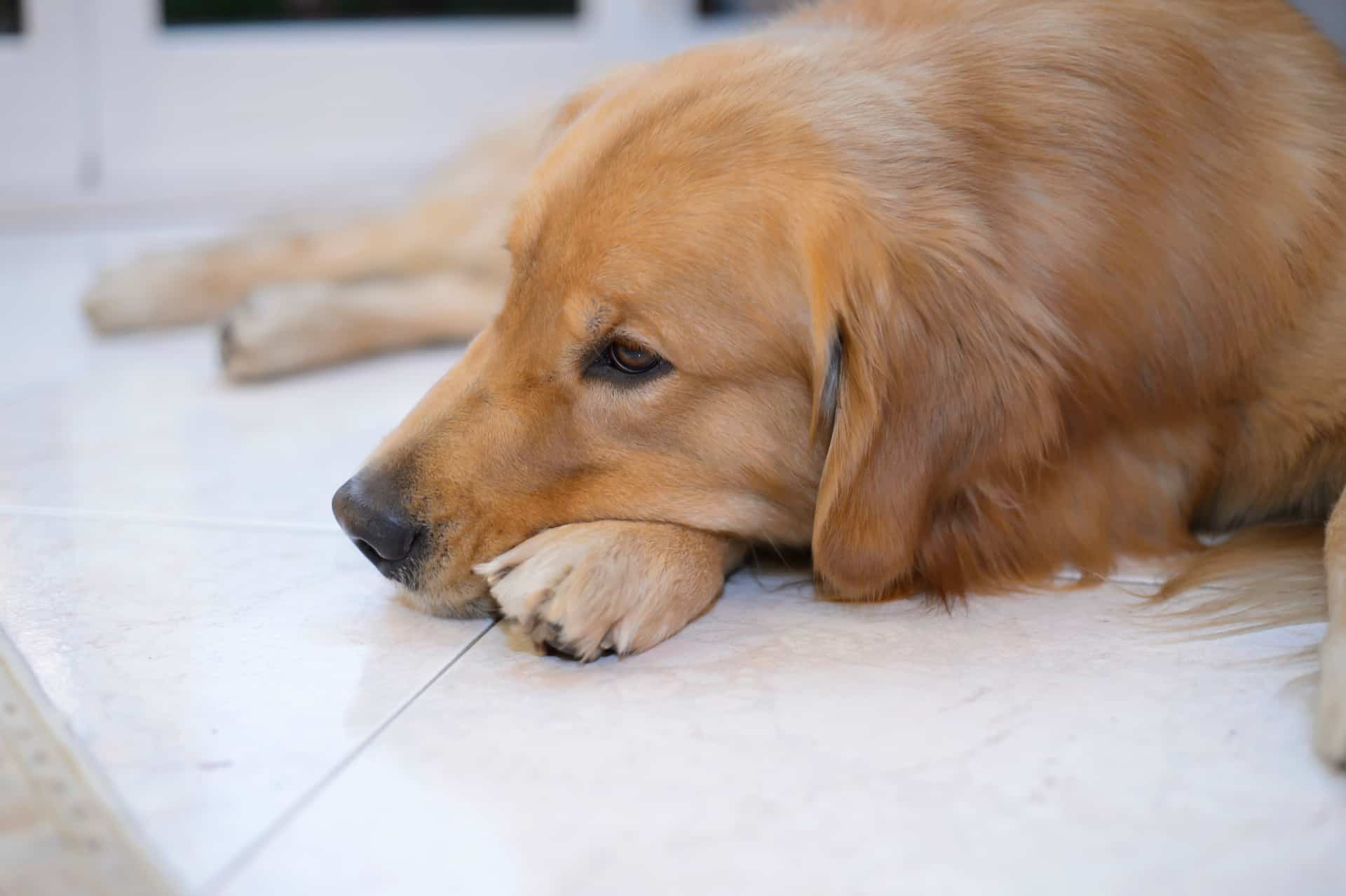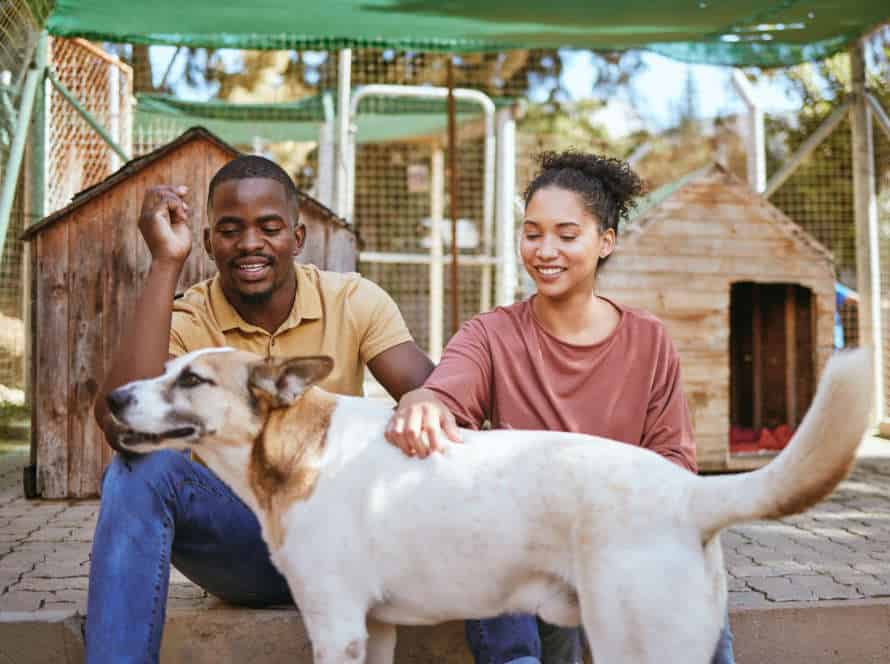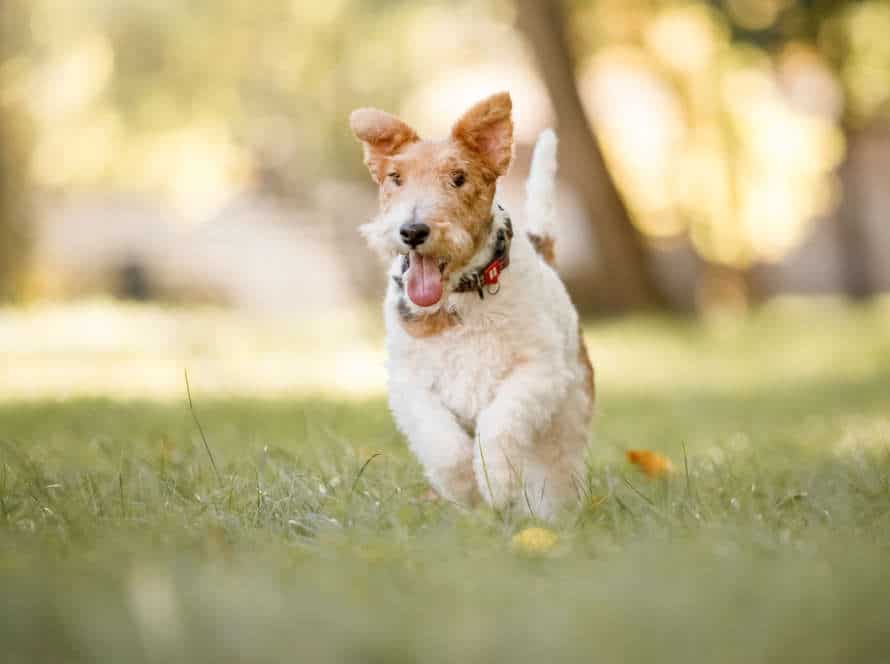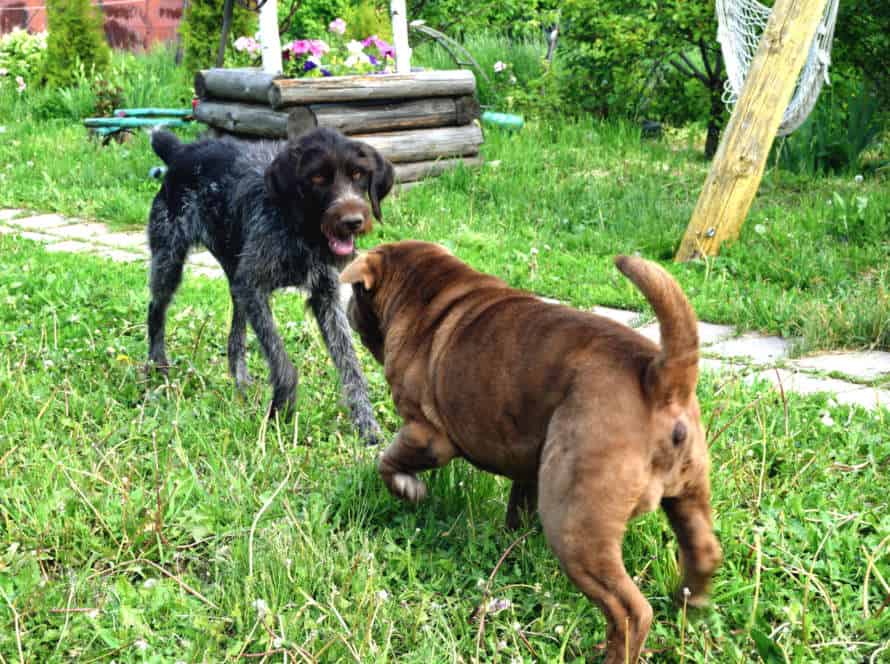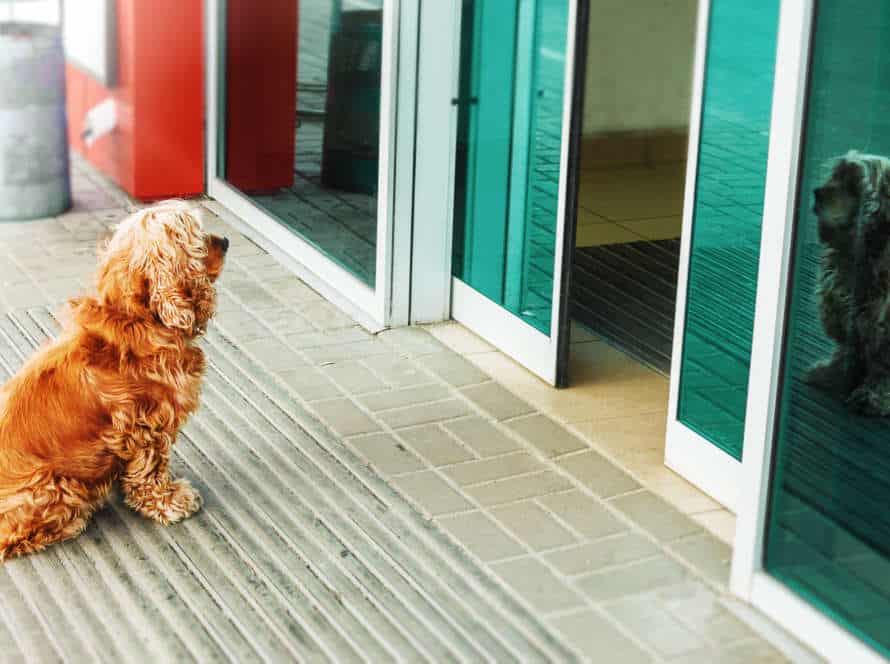Separation Anxiety After a Move: Helping Your Dog Cope
Moving can be stressful for doggos. Here are some tips to help them cope with the new environment.
- Establish a routine. Before the move, create a consistent feeding and walking schedule. Then, stick to it.
- Create a safe space. Designate an area in your house with their bed, toys, and water bowl.
- Spend quality time. Play, train, or go for walks with your pup to bond and reduce anxiety.
- Consider puzzle toys. These can keep your pup occupied while you’re gone.
- Seek professional help. In severe cases, talk to a vet. They can advise on medication or suggest a behaviorist.
Pro Tip: Be observant for signs of stress. Reach out for help if needed.
Understanding Separation Anxiety in Dogs
The bond between pets and their owners can be amazing. But if they’re parted, it can cause extreme stress and behaviour issues. Separation anxiety in dogs is a real problem. It’s caused by being away from their main person. In this article, we’ll look at its causes, signs and treatments.
What is Separation Anxiety?
Separation anxiety is a condition in which dogs become anxious when apart from their owners. It can cause behaviors like excessive barking, destructive chewing, trying to escape, and even peeing or pooping inside.
Reasons for separation anxiety can include changes in routine, moving to a new home, or being left alone for extended periods.
To help dogs cope with separation anxiety after a move, owners can gradually increase the time they leave the dog alone. Comfort items like toys or blankets, white noise, or background music can be helpful. Consulting a vet or animal behaviorist is also a good idea for support and treatment options.
Symptoms of Separation Anxiety
Separation anxiety can affect pooches of all ages, breeds, and sizes. Here are some common indicators to look for if you think your pup may be struggling with it:
- Loud barking or howling when left alone.
- Damaging behavior, such as gnawing or digging, when left alone.
- House soiling, even though they’re potty trained.
- Trying to escape from a crate or room.
- Walking around or being restless when left alone.
- Drooling or panting too much when left alone.
- Loss of appetite or no interest in food when left alone.
It’s important to collaborate with a vet or certified dog behaviorist to find the best solution for your dog if they have separation anxiety.
Why Does Moving Trigger Separation Anxiety?
Moving can cause separation anxiety in dogs. This is because it disrupts their familiar environment and routine. Signs of this can be destructive behavior, barking/whining, and accidents in the house.
To help your dog adapt, gradually introduce them to the new place. Leave familiar items with them such as beds and toys. Provide interactive toys or puzzles for when you’re away.
For extreme cases, get the help of a professional trainer or behaviorist to tackle the cause.
Preparing for a Move with a Anxious Dog
Moving house can be a stressful time for both you and your pup. Anxiety caused by a move can lead to separation issues and bad behaviour. Here are some tips to help your dog cope with the transition:
- Make sure your pup has a safe, comfortable space.
- Take things slow and gradually introduce your pup to the new home.
- Let your pup explore the new environment at their own pace.
- Spend quality time with your pup and provide plenty of reassurance.
- Provide your pup with familiar items, such as toys and bedding.
Familiarize Your Dog with the New Environment
Relocating can be a nerve-wracking and anxiety-causing experience for doggies, particularly for those susceptible to distress. Getting your pup acquainted with the new environment before and after the move can assist in calming their tension and making the transition easier.
Here are some tips for preparing your anxious pup for a switch:
Before the move:
- Take your pup on short jaunts in the fresh neighborhood to introduce them to the new environment gradually.
- Bring along familiar toys, blankets, and bedding to the new home to create a sense of familiarity.
- As much as possible, stick to a routine to help your pooch feel secure.
After the move:
- Allow your pup to explore the new environment on their own time.
- Give your pup lots of attention, exercises, and toys to keep them occupied and keep boredom away.
- Utilize positive reinforcement to promote good behavior and help your pup adjust to the new environment.
Keep Your Dog’s Routine Consistent
Consistency is a must when it comes to keeping your pup’s routine intact, especially during times of transformation, like moving house or tackling separation anxiety. Here are some tips to assist with that consistency:
- Have a strict daily schedule for feeding, walking and playtime.
- Keep their sleeping and/or crate training arrangements the same.
- Provide familiar toys, blankets and bedding for your pooch, to make them more comfortable in the new environment.
- When relocating, supply your pup with a safe and secure space, far from the chaos of packing and moving.
- If dealing with separation anxiety post-move, slowly introduce alone time by leaving for brief periods and gradually increasing the time away.
Pro Tip: Patience is essential when helping your pup adjust to change. By being consistent and offering a recognizable and secure setting, you can help reduce your pup’s stress and make the transition to a new routine much smoother.
Introduce Your Dog to New People and Pets Before the Move
Introducing your pup to other people and animals prior to the move can help lessen their nervousness and tension during and after the move. Here are some helpful tips:
- Organize playdates with your neighbors, family, or friends who have dogs. This will allow your furry pal to mingle and be more content around other pooches.
- Take your dog to places like pet stores, dog parks, or dog-friendly cafes. This will help them connect with strangers and other pets.
- Steadily heighten the duration of your dog’s contact with new people and pets. If achievable, plan longer visits or organize for a temporary stay before changing homes.
- Never insist your dog to mingle or socialize. Notice your pup’s body language, and give them time to become accustomed to the new atmosphere at their own speed.
It’s vital to comprehend that relocating can be a nerve-wracking ordeal for your dog. By introducing them to new people and pets earlier, you are creating a better environment for them to adjust and conquer separation anxiety after the move.
Helping Your Dog Adjust After the Move
Moving can be tough for all, especially your pup. When you settle into a new abode, your dog may experience anxiousness, tension, and loneliness. To assist your canine with the transition, it’s essential to provide them with a secure and cozy environment. This article will explain how to help your furry friend cope with their adjustment and separation anxiety after a move.
Give Your Dog Extra Attention and Affection
Moving can be tough on your pup. To help them adjust, give them lots of extra attention and affection! Here’s how:
- Spend quality time with them everyday; go for walks, play fetch, or cuddle on the couch.
- Show physical affection, like petting, scratching, and cuddling.
- Offer treats, praise, and toys for positive reinforcement.
- Give them their own cozy space to retreat and relax.
- And don’t forget to be patient – with time and love, your pup will feel right at home.
Create a Safe Space for Your Dog
Moving can be stressful for our furry friends. We must create a secure space for them to adjust to their new surroundings and help ease their separation anxiety. Here’s how:
- Pick a quiet, secluded area of your home and designate it as your dog’s spot.
- Use blankets, toys, and comfy bedding to make the area familiar and cozy.
- Put a crate or playpen to keep your pup safe and out of trouble when you’re away.
- Make a routine and stick to it. This will help your doggo feel more secure faster.
- Go for walks and spend quality time with your pet. This will strengthen your bond and reduce their anxiety.
- With patience, your pup will feel safe in their new home.
Bonus Tip: Give your pup enough time to adjust before introducing new people or environments. That way, they won’t feel overwhelmed and will stay secure.
Gradually Increase Alone Time
Gradually increasing alone time is a great way to help your pup adjust after moving. Here’s the scoop:
- Start by leaving them for a few minutes and go up from there.
- Provide a comfortable, safe place for them, like a cozy bed or crate.
- Give them toys and snacks to keep them busy when you’re gone.
- Use positive reinforcement like treats and praise when they stay calm during alone time.
- If possible, set a routine for them so they know what to expect.
With patience and consistency, your pooch can learn to relax, even after a move.
Training and Professional Help for Separation Anxiety
Moving to a new home can be tough on both humans and pups. Commonly, dogs suffer from separation anxiety afterwards. But, don’t worry! There’s lots of help out there. Training and professional aid can make it easier. Let’s check out how this can help your dog cope post-move.
Positive Reinforcement Training Techniques
Positive reinforcement techniques are an effective way to train your pup! They focus on rewarding good behavior, to encourage the same in the future. This is especially helpful when dealing with separation anxiety after moving to a new home. Here are some tips:
- Begin with simple commands like sit, stay, come. Give your pup a treat or praise them for following it.
- Increase the difficulty of commands and reward them for completing each task. This boosts their confidence and obedience.
- Use treats, praise, and toys to make being alone a positive experience. Practice leaving them alone for short periods, then gradually increase the duration.
- Get professional help from a trainer or behaviorist. They will create a personalized plan for your pup.
Remember, patience and consistency are key! With time, your pup will link good behavior with rewards and learn to overcome their separation anxiety.
Behavior Modification Training Techniques
Behavior modification training can help dogs with separation anxiety. Many things can cause this issue, even moving to a new home.
You can try some techniques at home. Gradually increase alone time, and make it more fun with a treat-stuffed toy or calming music.
In more serious cases, a dog behaviorist can create a personal training plan. This will allow your dog to live a happier life and cope with separation anxiety.
Consultation with a Veterinarian or Animal Behaviorist
Is your pup having a hard time adapting to the move? It could be time for professional help. Talking to a vet or animal behaviorist is a great way to assist your doggo in settling into their new home. Here’s how a pro can help:
- Diagnose: The vet can check if any medical issues are causing the anxiousness. The animal behaviorist can point out the triggers that are making your pup uneasy.
- Train: They can show you and your pup techniques to reduce stress, like desensitization and counter-conditioning.
- Medication: If needed, a vet can give medicine to help with the symptoms.
- Follow Up: An expert can provide advice and support to ensure your pup is making progress.
Don’t wait to get help if your pup is having a hard time adjusting. With the right guidance, they’ll learn to cope and be content in their home.
Conclusion
A move may cause separation anxiety for both you and your pup. It’s alright though! With patience, understanding, and the right training, you can help your dog adjust to the new home. Simple techniques can help your dog trust you, build confidence, and eventually overcome the anxiety.
Recap of Tips
Help your pup cope with the stress of a move! Here are some tips to make their transition smoother and keep them calm:
- Have a consistent routine with feeding and walking times for structure and familiarity.
- Set up a safe space for them with their favourite toys and blanket.
- Exercise and physical activity will help them release energy and reduce stress.
- Employ positive reinforcement techniques to link good experiences with being alone.
- If anxiety persists, seek professional help from a vet or animal behaviourist.
By following these tips, your furry friend will soon feel right at home. Pro tip: Be patient and understanding with your dog – adapting to changes can take time.
How to Monitor Your Dog’s Progress
Keep a tab on your pooch’s progress. It’s key to helping them adjust to a new place when they have separation anxiety. Here are some tips:
- Observe their reaction: Note down any changes in behavior when you come and go. Are they barking, whining, or panting a lot?
- Make a journal: Document progress and changes. Record any improvements and new tricks they’ve learned.
- Track their movements: See what they do when you’re away. Do they sleep, play, or wander around? Monitor their activity and make any needed adjustments.
By monitoring their progress, you can figure out what triggers their anxiety and take steps to help. Be patient and consistent with your efforts. A pro tip: If there’s any prolonged distress, seek expert help from a vet or animal behaviorist.
When to Seek Further Help
If your pup is having anxiety after a move, it can be tough to figure out when to get help. Here are warning signs that your pup might need more assistance:
- Wrecking stuff when left alone.
- Unending whining or barking.
- Not eating or no interest in food.
- Being down and lazy.
- Bad temper towards other animals or people.
If you spot any of these signs, it’s essential to get help. Your vet or an expert dog behaviorist can assist in making a plan to reduce pup anxiety and upgrade their life quality. With time, patience and the correct support, your pup can learn how to manage their separation anxiety and excel in their new home.
Pro tip – Have patience with your pup during the transition and take measures to give them safety and security. With love, attention and the correct support, your pup can learn to handle separation anxiety and enjoy their new home.
Frequently Asked Questions
Q: How long does it typically take for a dog to adjust to a new home after a move?
A: It can take anywhere from a few days to several weeks for a dog to fully adjust to a new home after a move. Factors such as breed, age, and personality can all play a role in how quickly a dog adapts.
Q: What are some signs that my dog is experiencing separation anxiety?
A: Signs of separation anxiety in dogs can include excessive barking or howling, destructive behavior, drooling, panting, and attempting to escape. If you notice any of these behaviors, it’s important to address them promptly.
Q: How can I help my dog cope with separation anxiety after a move?
A: Some things you can do to help your dog cope with separation anxiety after a move include giving them plenty of exercise and mental stimulation, creating a comfortable and familiar space for them, gradually increasing the amount of time you spend away from them, and seeking professional help if necessary.
Q: Should I consider getting another dog to help my dog cope with separation anxiety?
A: While getting another dog may seem like a solution, it can actually make things worse if your dog is already experiencing separation anxiety. It’s important to address the root cause of the anxiety and work on resolving it before considering adding another dog to the mix.
Q: Can medication help with separation anxiety in dogs?
A: In some cases, medication can be helpful in treating separation anxiety in dogs. However, it should always be used in conjunction with behavior modification techniques and under the guidance of a veterinarian.
Q: Is it possible for separation anxiety to develop after a move even if my dog has never had it before?
A: Yes, it’s possible for dogs to develop separation anxiety after a move even if they’ve never had it before. The stress and disruption of a move can be overwhelming for some dogs and can lead to behavioral issues such as separation anxiety.

